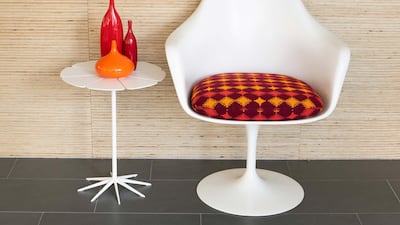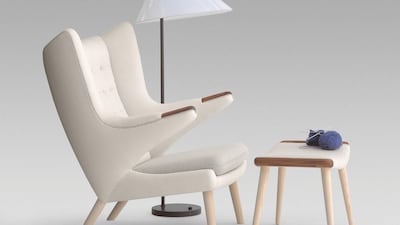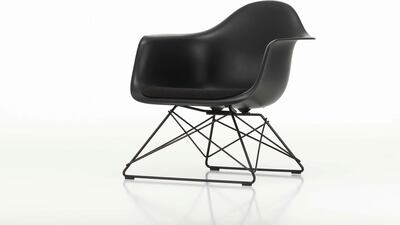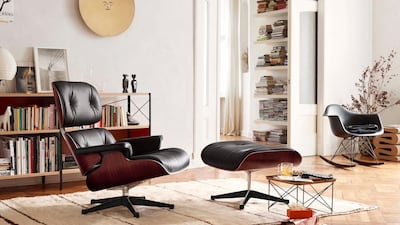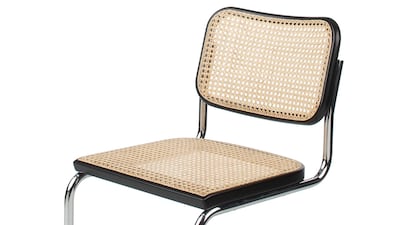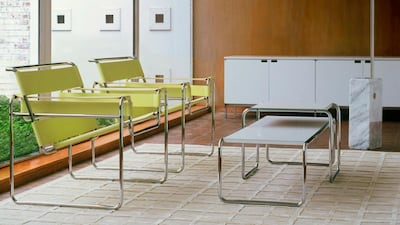Sinking into a brilliantly designed chair can have a visceral effect on the most fair-minded of furniture users, not to mention the aesthetic pizzazz it can add to your home. Much more than merely four legs and a place to park your posterior, seating has been a source of inspiration and enthusiasm for some of the world's most revered architects and product designers since the start of the 20th century. "A chair is a very difficult object," German-born architect Ludwig Mies van der Rohe told Time magazine in February 1957. "A skyscraper is almost easier."
Thonet 209
The chair began to evolve as a sleek object of design, and not just one of frank function and comfort, when rapidly evolving technological innovations at the turn of the century meant architects and product designers could make more use of their materials. Suddenly, plastics and plywood could be moulded and warped into mind-boggling shapes and designers were much like wizards with new wands. One of the most critical advancements was the invention of a process through which wood could be bent by steam. Using this technique in 1900, Austro-German cabinetmaker Michael Thonet presented curvilinear furniture, which was revolutionary at the time. He introduced the Thonet 209, a sculptural chair made from only six curved pieces of wood bowed together to create what is still one of the world's most recognisable chairs. Look around any modish bistro with glossy white subway tiles from Barcelona, Bangkok or Beirut and you may spot them quietly tucked under tables.
The Wassily
As the Bauhaus movement evolved, Hungarian-born architect Marcel Breuer, who designed the original Whitney Museum of American Art in New York, drew from his background in carpentry to design two of the chair world's most famous seats. The Wassily, inspired by bicycle handlebars, was the first object to use bent, non-reinforced tubular steel as a supporting framework and many at the time interpreted its minimalist metal structure as an abstract piece of art, rather than an everyday domestic object. Today, if you're lucky enough to find an original designed by Breuer in 1925, you can expect to pay Dh140,000. Knoll continues to manufacture the distinctive piece, and a new one comes with a slightly less exorbitant Dh10,300 price tag.
The Cesca
Breuer's Cesca, released in 1928, was also a real chair-changer. Using a similar tubular-steel frame to that of the Wassily, but with taut leather panels, the daring design gave the impression the sitter was floating on air. Also known as the B32, it was the first design chair to be mass-produced and many arrived into the homes of the rich and stylish soon afterwards. One of his original pieces sits in New York City's Museum of Modern Art today.
Barcelona
In 1929, another legend was born, this time at the hands of Ludwig Mies van der Rohe and the interior designer Lilly Reich in Germany. While designers of the Bauhaus era focused their work on uniting art with industrial design for the "common man", the duo's audacious Barcelona chair was an exception. Initially designed for Spanish royalty to sit on during the Expo held in Barcelona that year, the object's distinctive scissor shape was inspired by Roman folding chairs and cleverly constructed by a stainless-steel cross frame formed by just two pieces of metal, one each side. The chair is still in production and as popular today, and while it has sadly been copied all over the world (as have most of the pieces mentioned), if you want to sleep – or sit – sound knowing you've bought an authentic piece, look for the van der Rohe signature and Knoll logo carefully engraved into the steel.
Eames
In the 1950s a burst of modern icons arrived on the design scene, defining the still-popular mid-century modernist movement. Led by Charles and Ray Eames, industrial designers in Los Angeles, the partners worked with moulded plywood and pioneered new technologies and techniques to make "the best for the most for the least". They used plastic resin to cast a smooth, simple L-shape seat, and so the Eames Shell Chair was introduced. It was the winning design in a competition by MoMA to improve cost-effective furniture. In 1956, the Eames Lounge Chair & Ottoman followed, a sleek two-piece that has become synonymous with good taste and style-savvy homeowners. If you had to choose just one chair to buy, this is certainly it. Go for black leather and rosewood plywood, the original colourway.
Wishbone and Papa Bear
On the other side of the world, Danish furniture designer Hans Jorgensen Wegner was busy working on steam-bending a single piece of wood to construct his chair's back and armrest into a comfortable Y-shape. The aim was to give stability while also ensuring comfort and support. The result? The stylish Wishbone, a chair that uses 120 metres of paper cord for the seat and a design that has been in continuous production since its release in 1950. Four years later, one of the world's comfiest contenders joined the ranks, with Wegner's Papa Bear chair. Characterised by two armrests protruding out – many critics have referred to the arms as "bear paws" – and edges that cradle the sitter's body, it is meant to be worn in, rather than worn out, and is still handcrafted today on a made-to-order basis.
Tulip Armchair
In that same decade, Eero Saarinen's Tulip armchair, introduced in 1955, is pivotal not least because of its one-legged design. "The undercarriage of chairs and tables in a typical interior makes an ugly, confusing, unrestful world," said the Finnish-American industrial designer. "I wanted to clear up the slum of legs. I wanted to make the chair all one thing again." The shape, inspired by the pull of 1960s pop, resembles a flower or stemmed wineglass, and Saarinen went on to design a series of furniture with the single pedestal leg, plus several tables.
The egg
Modernism continued to evolve, as the hard edges of pioneers like van der Rohe and Breuer softened. In 1958, Danish architect and designer Arne Jacobsen introduced The Egg. He worked for hours experimenting – first with clay to find the shell's perfect sculptural shape. And while the smooth, cosy creation that cocooned its sitter seemed futuristic when it was launched, as the decades have passed the chair remains timeless, even today.
More than 60 years later, all of these functional pieces of art are as achingly hip and mystically modern now as when they were first designed. Many mentioned now stand proudly in the world’s most prominent museums, and investing in one means not only owning a status symbol, but also taking the weight off your feet with a piece of architectural perfection.

